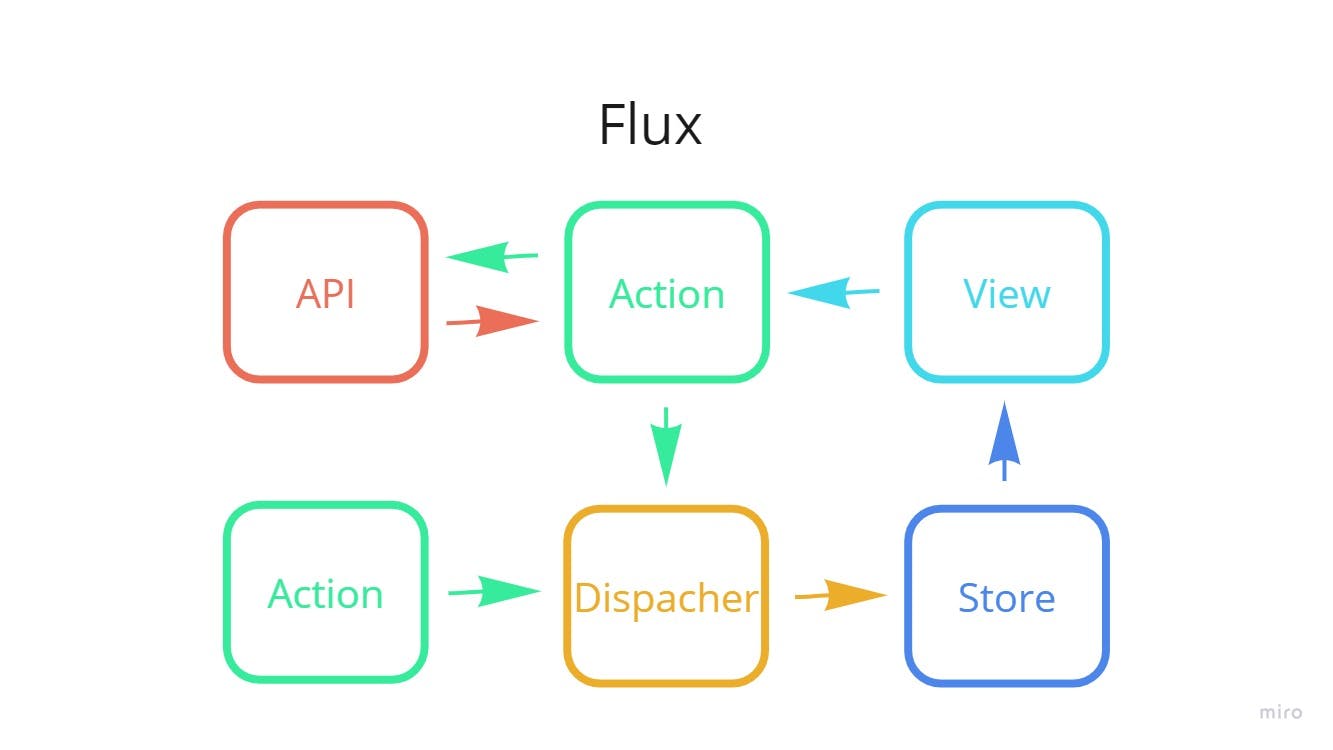Introduction
Flux was born within the Facebook team as a solution for scalability problems in complex web applications. Flux has a unidirectional data flow approach that simplifies debugging in comparison to the MVC approach.
How?

Flux is made up for:
Action creators: create and return appropriate
actions.Action types: represents a specific action like creating or deleting a resource.
Dispatcher: a function that receives an action, performs the appropriate logic, and sends the result to the store.
Store: the project's source of truth. It contains all the data and that data notifies the view that it needs to be updated.
View: the UI of the app. When a user interacts with the UI, it dispatches an action.
Code example
Action types
const ADD_TASK = 'ADD_TASK';
const DELETE_TASK = 'DELETE_TASK';
Action creator
const addTask = (task) => {
return {
type: ADD_TASK,
payload: task
};
};
const deleteTask = (taskId) => {
return {
type: DELETE_TASK,
payload: taskId
};
};
Dispatcher
const dispatcher = (action) => {
// Do someting
store.dispatch(action);
};
Store
const initialState = {
tasks: []
};
const taskReducer = (state = initialState, action) => {
switch (action.type) {
case ADD_TASK:
return {
...state,
tasks: [...state.tasks, action.payload]
};
case DELETE_TASK:
return {
...state,
tasks: state.tasks.filter(task => task.id !== action.payload)
};
default:
return state;
}
};
View
const handleCompleteTodo = () => {
dispatcher(addTask);
};
<button onClick={handleAddTodo}>
Thanks to the unidirectional data flow, you can travel through time and find that bug or understand that code followingg the trail of it.
